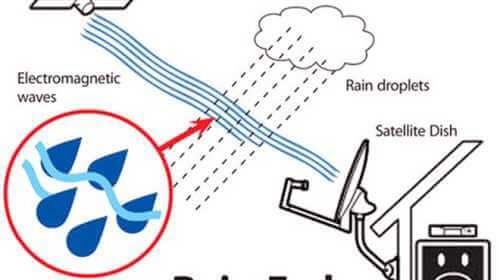Apr 10, 2018
One of the questions frequently asked regarding broadband satellite is why it costs more than terrestrial services. The reason is pretty simple. When installing fiber in the ground, it only has to be performed once. The optical equipment along the path can be upgraded with relative ease, but the big cost, the infrastructure cost, is a one-time, or infrequent event. Not so for satellites.
Satellites need fuel to remain in position. Most satellites are in geosynchronous orbit, thus they orbit the earth at the same rate that the earth spins, so they remain over a particular location all the time. However, they are still affected by gravity from the moon, sun and earth to some extent, and this can cause the satellite to drift out of position. Propulsion is therefore required to keep them in position. Rather than constantly making small corrections in an attempt to keep the satellite fixed in position, the satellite is put into a small “figure 8” that keeps it locked into a tight position in space using minimal fuel to stay there. All is well for the 10 – 15 years that the fuel normally lasts. When the fuel is nearly depleted, the satellite is sometimes put into a larger “figure 8” referred to as an “inclined orbit,” which requires tracking antenna on the ground (capacity prices are reduced). Eventually the satellite uses up the fuel, but a small amount is saved to kick the satellite out of orbit, into a satellite graveyard, or to burn up in the atmosphere.
What if the satellites could be refueled? What if a satellite that experienced an anomaly, could be repaired, rather than discarded? What if it could be upgraded? How much would this benefit the owners, and the customers of GEO (Geosynchronous Earth Orbit) satellite capacity? Orbital ATK and its subsidiary SpaceLogistics aim to find out.
In March of 2018, Orbital ATK announced plans for a next generation of “satellite life extension and in-space servicing products.” These are robotic systems that will bring new options for servicing and enhancing their customer’s satellites. This is an emerging market being pioneered by Orbital ATK.
Mission Extension Pods (MEPs) and Mission Robotic Vehicles (MRVs) are new products that will provide clients with the ability to extend the life of their valuable in-orbit satellites. The MEP refuels otherwise operational satellites for another five years, using an external propulsion module that attaches to fuel starved satellites. The primary role of the MRV is to transport MEPs, but it can also be used for some types of repairs. The MEP and MRV are designed to complement Orbital ATK’s first commercial vehicle to service satellites – the Mission Extension Vehicle, or MEV.
MEV-1 is expected to be launched in 2018, along with the Eutelsat 5WB satellite aboard an International Launch Services (ILS) Proton launch vehicle. It will begin providing mission-extension service for Intelsat, Orbital ATK’s first customer. The MEV-1 may be used to service multiple satellites with the same MEV vehicle. The MEV uses a low-risk docking system that attaches to a healthy satellite in need of fuel. It will attach using existing features on the customer’s satellite. Attaching a MEP to the satellite will provide it with another five years of fuel. The MEP will then take over propulsion and attitude control for the aging satellite.
MEV-1 will also be able to perform inspections and take images that will be sent back for review. The platform will provide the ability to relocate satellites to different orbital slots or different orbits. The vehicle is based on Orbital ATK’s GEOStar spacecraft bus platform which is capable of numerous dockings and undockings during its 15 year lifespan. The whole operation will be managed by Virginia based, Orbital ATK’s subsidiary SpaceLogistics. The company plans to expand capabilities to provide a fleet of in-orbit servicing vehicles with ever expanding capabilities, including repairs, cargo delivery, in-orbit assembly of large space structures, and deep-space gateways in lunar orbit.
While this is indeed an exciting development, it should be noted that some satellite operators are questioning whether it makes sense to give satellites longer lifespans, given the speed at which technology changes. For satellites focused on data communications, perhaps replacement makes more sense? On the other hand if the primary purpose of the satellite is the basic task of beaming video to the ground, keeping it going as long as possible makes a lot of sense. If the Orbital platform becomes capable of providing technology refreshes, in addition to refueling, the value of the assets will indeed be extended, resulting in cost savings for consumers and more revenue for satellite operators from a valuable asset that sits there generating revenue – just like fiber.





